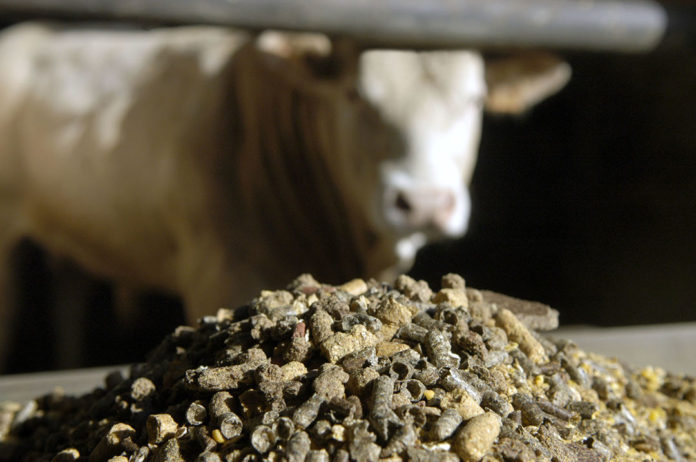The Tanzania Veterinary Laboratories Agency (TVLA) are implementing strategies to enhance the quality of animal feeds available for sale.
According to Dr. Stella Bitanyi, TVLA CEO, feed producers have been encouraged to submit samples of their products to the national animal health agency for testing and further recommendations for improvements.
“We remind participants that selling low-quality feeds is illegal in Tanzania to protect the nation’s livestock farmers,” said Bitanyi in a message which was delivered in the capital Dar es Salaam during a meeting with feeds producers.
This followed TVLA’s joint inspection of feed producers in the northeastern region of Arusha with the livestock ministry.
The inspection revealed that some feeds available for sale to animal owners had been adulterated with other substances, potentially jeopardizing the health and performance of livestock.
TVLA and livestock ministry officials held a meeting with producers, distributors, and customers of farm animal feeds to emphasize the importance of verifying feed quality.
New technology in feed manufacturing
In October last year, Mr. Abdallah Ulega, Minister for Livestock and Fisheries urged for innovation, investment, and the adoption of new technology in Tanzania’s feed manufacturing sector.
According to Tanzanian media reports, several developments were needed at the time to reduce market prices for fish, chicken, and other livestock products, which were reportedly more expensive in Tanzania compared to neighboring Kenya. The prolonged drought, attributed to climate change, was anticipated to worsen national food insecurity.
For the 12 months of 2022-23, national feed output reached 1.58 million metric tons (mmt), up from 1.38 mmt in the previous year.
Over the same period, the number of feed mills increased from 199 to 221, according to the minister. The 22 new facilities are located in eight regions of the country.
Despite these developments, 60% of the country’s feed demand is still met with imports. To address the current feed shortage, the government is prioritizing domestic industries and offering incentives to local producers.
Livestock Sector Transformation Plan
To achieve these goals, the government has developed the Livestock Sector Transformation Plan 2022-23 – 2026-27. This plan focuses on attracting investments in livestock genetics, animal health, extension services, research, training, value-added products, and a national ranching company. It also emphasizes water and pasture management, and feed production.
Tanzania faces worsening feed ingredient shortages ahead, per USDA FAS. Lower corn prices have prompted local growers to switch crops, potentially reducing this year’s harvest by 6%.
Corn, vital with consumption pegged at 5.63mt starting July, sees FAS revising down feed use to 450,000mt. Livestock farmers are scaling back due to costly protein feeds, exacerbated by disrupted soybean imports. Tanzanian crushers are halting operations amid unmet soybean supply challenges.
Factors hindering productivity
According to research by Wageningen University & Research (WUR), deficiencies in feed quantity and quality are the main factors hindering productivity of dual-purpose chickens in Tanzania.
Interviews with poultry owners in semi-intensive and intensive systems revealed that feeds primarily consist of corn bran, sunflower cake, and fishmeal, which often lack sufficient protein and amino acids. Imported ingredients like premixes are considered too costly for regular inclusion.
Another issue highlighted was the widespread unawareness of aflatoxins and other mycotoxins, and their harmful effects on human and animal health.
In a related study conducted by WUR and local researchers in Tanzania, there is a recognized need for enhanced attention to feeding strategies in dual-purpose chicken farming. It emphasizes the importance of ensuring that feed formulations are suitable, economical, and safe.
Although corn supplies in the country are generally sufficient, the study identified a shortage of protein ingredients.








